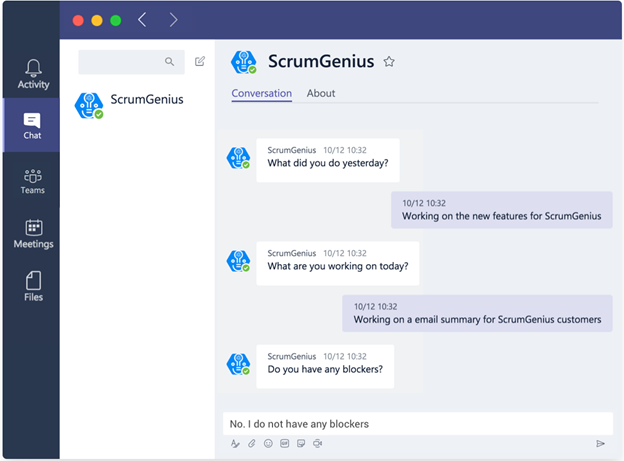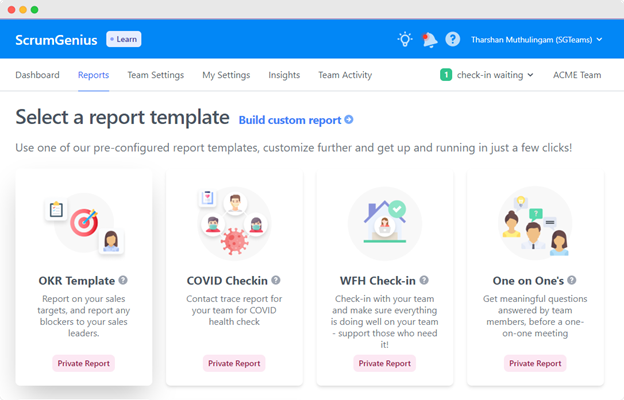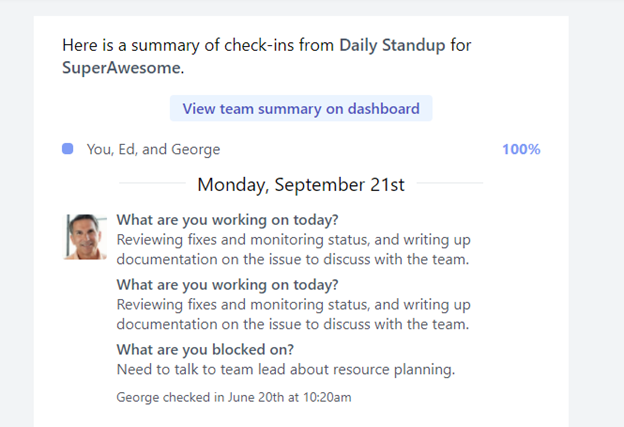Being a manager isn’t easy. While most of us dream of having our team of employees working for us and controlling their deliverables, being in charge comes with its own set of challenges.
If you went to a business school to get your MBA, you have likely heard of a concept called “span of control”. In short, it describes how many employees a single manager can effectively have directly reporting to him or her.
How can ScrumGenius help you efficiently set up the reporting process to overcome the issues of supervising employees, delegating tasks, and improving productivity? In this article, you’ll find out:
- What a direct report is
- Factors determining how many direct reports you should have
- How to manage direct reports effectively
Read on to find out.
What Is a Direct Report?
Managers, executives, or employees at a relatively high position in the organizational structure usually have several other employees or “direct reports” working for them. The manager is then responsible for assigning work to the direct reports, reviewing their deliverables, and tracking their performance.
In a nutshell, a direct report is a subordinate working directly below the person who supervises their work. If you are a manager with several direct reports, you are expected to assign work to them, manage and measure their performance, and provide feedback and support when needed.
How Many Direct Reports Should You Have?
An optimal number of direct reports that a single manager should have has been a hot topic in the business world. Unfortunately, there is no consensus among business scholars and leaders as to what that perfect number should be.
Some academic studies agree that the optimum span of control for any manager should be seven, plus or minus a few. However, the exact number will vary based on several variables specific to your organization:
- The complexity of the work. As a rule of thumb, the manager’s span of control is inversely correlated with the complexity of work: the more difficult the tasks are, the fewer direct reports you should have. This way, you can make sure that your employees get the resources and attention required to get the work done.
- Use of technology. Tools that allow more information flow help managers to increase the number of direct reports. By using tools like ScrumGenius, you can automate the reporting process and easily keep in touch with remote employees. So more technology means a wider span of control.
- Employee skills and experience. On the other hand, you need to keep in mind that inexperienced employees will require more attention and training. If your direct reports are highly-skilled, you can get away with a larger span of control.
- Managerial experience. Another important factor to consider is the managerial skill level. For example, seasoned C-level managers can effectively manage up to 15 directors and VPs, while a recently-promoted manager would be more comfortable with just a couple of direct reports.
- Acceptable error rate. More precise work requirements mean that you should have fewer direct reports. If errors are unacceptable in your line of business, your span of control should be much narrower to ensure that you can provide enough support and supervision to your direct reports.
- Dynamic environment. Generally, more dynamic environments call for a narrower span of control. A stable and predictable line of business, on the other hand, means that you can have more direct reports without getting overloaded.
How to Manage Direct Reports Effectively
No matter how many or how few direct reports you have, you can easily lose track and get overwhelmed without an efficient strategy in place. Here are a few ways you can manage your direct reports more effectively:
Automated Reporting
By automating your reporting process, you can either increase your span of control or manage your existing direct reports more effectively. One-on-one meetings work well in building rapport with those in your span of control, but they're also very time-consuming.
Tools like ScrumGenius allow you to automate your daily reporting with remote employees across various time zones.
Instead of repeating the same questions and organizing the same one-on-one meetings, you can automate this process by having the ScrumGenius bot regularly ask them for updates through the chat platform that you're using.

This means that you can sync with your team at any time, from anywhere. You can also easily manage your team’s workflow from a single dashboard.
More Effective Meetings
To create a healthy work relationship and establish a connection with direct reports within your span of control, it is recommended to conduct regular team meetings with them and keep them in the loop about the progress of the project. However, if you have several direct reports, such meetings can get quite time-consuming.
You can use ScrumGenius to automate getting daily updates to inform the eventual meetings. You can also use the tool to automatically get meeting report updates from your direct reports for those meetings that you can't attend.

These allow you to free yourself up some time for other tasks. You can also keep your team in the loop with the brief report summary emails sent by ScrumGenius.

Open Communication and Systemized Feedback Loops
Honest and clear feedback will make your direct reports realize how important their contribution is to the entire project and make them feel motivated to invest more time and effort into the work. Have one-on-one meetings to check up on your direct reports.
Regardless of your management style, building trust, and having open conversations are key to a successful direct reporting process.
At the same time, you should use employee feedback to create a better product or work environment. You can use ScrumGenius’ private reports to optimize employee-manager collaboration, as well as give and receive private feedback.

Providing Clear Outlines
If you want your direct report to perform according to your expectations, you need to provide them with a clear outline and direction of what you are expecting them to accomplish. Have clear sections throughout your report documents to make them skimmable.
It is also important to have several team meetings throughout the term of the project to keep track of their progress and provide feedback and guidance. Supplement these with one-on-one meetings to figure out if there are things that they prefer to tell you, in person and in private.
Optimize Your Direct Report Process with ScrumGenius
If done correctly, being a manager can be an extremely rewarding experience.
By utilizing direct reporting tools like ScrumGenius, you can automate the reporting process, conduct more efficient meetings, and keep your employees in the loop.
And with regular check-ins, clear communication, and systemized feedback, the efficiency and performance of your direct reports will be taken to the next level.
